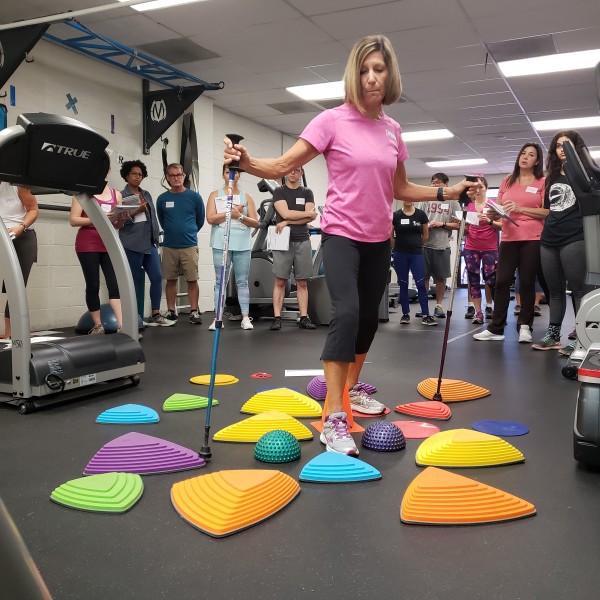
While exercise has been hailed as a new therapeutic intervention in Parkinsons Disease, its efficacy depends on the way it is prescribed and implemented! This requires applying the principles of exercise and sports science to persons with Parkinson disease. One of those principles is called “specificity” of training. Read more to find out how we focus on specificity of training in our new release on “Agility”. Discover how you can train like an athlete and make function a sport!
Our Agility Guided Plans
are available to begin today!
Agility is the ability to start and stop and change direction (or position) quickly and accurately 1 . Agility requires a foundation of strength, balance and coordination --- making it a multimodal approach to fitness 2 --- but it is more than just a physical skill. The ability to “be agile” requires that we make rapid whole-body movements, at the last minute, in response to signals (e.g., instructions) and cues (e.g., targets) from the environment. Even when we are distracted or multi-tasking! Therefore, the focus of agility training is to improve the mind–body connection necessary to carry out rapid complex tasks 1 . With practice you will learn to process and respond to environmental stimuli faster with more accuracy, and you will reduce the duration of time needed to perform the movement. Recently, this multimodal motor-cognitive training approach to exercise has been described and shown to benefit persons with PD and older healthy adults 3-8 . It is also a time efficient alternative for exercise training if you have other things you want to do with your day!
Agility is typically associated with sports, martial arts, and dance (Table 1) 1,9-12 . If you are participating in sports training like football, you need to learn to anticipate and respond to relevant cues related to movement of an opponent approaching, or a teammate preparing to pass a ball. If you are participating in tango, you need to learn to anticipate your partners next movement to be ready to step with the correct leg while matching the rhythm of the music. These are examples of training that mimics the demands of the task. This is called specificity of training and it is one of the major principles of an exercise prescription 9 !

YES. This type of task-specific agility training plays an integral role in rehabilitation for person with Parkinson disease 13 . The motor and cognitive symptoms of PD interfere the most with your ability to navigate and function in complex environments. If you have early or mild PD, you may only notice the constraints to movement when performing complex coordination in challenging conditions. For example, walking fast in an unfamiliar or cluttered environment while talking to your colleague, or worrying about your next meeting with your boss! As the disease progresses, the loss of mobility and function is inevitable. That is why, just like an athlete, you need to train the mind-body connections that mimic the demands of everyday life to delay disability -- and to sustain or improve mobility and function. In physical and occupational therapy, we call this type of agility training - Functional Mobility 14 ! In fitness, it is often referred to as functional fitness or functional agility!
One of the greatest challenges to agility training (and the place to start) is in overcoming the symptom of bradykinesia. This requires acceleration, the ability to exert high attentional effort to produce big and fast whole-body movements over and over again 13 . It is hard to be agile if you can’t accelerate and move your whole body rapidly! Even if you have early PD and think you don’t have an acceleration problem, then you need to train in more complex conditions that further challenge coordination patterns, strength, balance, predictability and multitasking. The good news is that the training of acceleration has double the rewards. as the process of moving bigger and faster especially in multiple directions, also retrains your ability to anticipate the need to “brake” – to quickly recover your balance to prevent a fall 13 .
For this release (pre-recorded and LIVE classes), we are primarily focusing on this one aspect of agility, whole-body acceleration for reaching and stepping. You will practice rapid multidirectional whole-body movements in different postures, while moving overground (e.g., scooting, crawling, walking) and while transitioning up and down (e.g., floor to stand, all 4’s to side sit, sit to stand). To maintain physical effort and cognitive engagement, the instructors will progressive the challenge by varying the predictability of directions or position, increasing balance, speed or repetition requirements, and by adding resistance or secondary tasks!